Mummified Crocodiles Sacrificed to the Gods Uncovered in Egypt
While performing excavations at a site known as Qubbat al-Hawā in southern Egypt in 2019, archaeologists from the University of Jaén in Spain made a strange and startling discovery. They unearthed a tomb that contained the remains of 10 mummified crocodiles, which once swam the waters of the River Nile in large numbers during the time of the ancient Egyptian pharaohs.
Two of the Spanish archaeologists have joined forces with a pair of Belgian scientists to produce a full and complete analysis of the skeletons of these mummified crocodiles and their tombs, published in the journal PLOS One.
“More than 20 burial sites with crocodile mummies are known in Egypt, but to find 10 well-preserved crocodile mummies together in an undisturbed tomb is extraordinary,” explained study lead author Bea De Cupere, an archaeozoologist from the Royal Belgian Institute of Natural Sciences (RBINS), when discussing the mummified crocodiles. “Of most mummies collected by museums in the late 19th and early 20th centuries, often hatchlings, we don’t know exactly where they come from.”
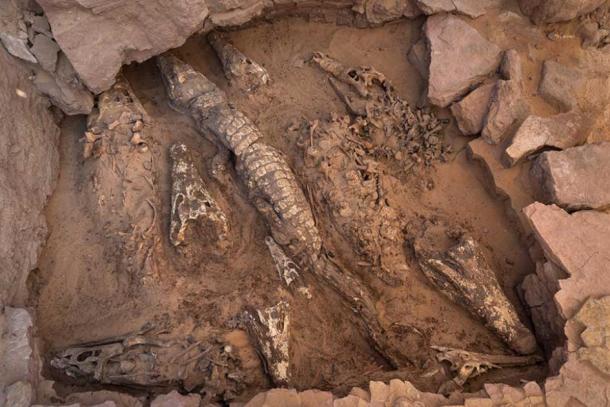
Ten mummified crocodiles unearthed in an undisturbed tomb in Qubbat al-Hawā, discovered in 2019. (Patricia Mora Riudavets / Royal Belgian Institute of Natural Sciences)
Excavations of Rock-Cut Tombs Revealed Mummified Crocodiles
Qubbat al-Hawā is the site of an ancient Egyptian necropolis and is located on the western bank of the Nile opposite the historic city of Aswan. Its collection of over 100 tombs features the resting places of many aristocrats and priests, mostly from the age of the Old and Middle Kingdoms (2,700 to 1,800 BC).
- Nine Crocodile Heads Found in Ancient Egyptian Tombs a “First of Its Kind” Discovery
- Dinosaur-Eating Galloping Crocodiles Once Existed in the Sahara Desert
The small, rock-cut tomb of the crocodiles, which contained five skeletons and five crocodile skulls, was located right next to six tombs that held the bodies of many local dignitaries, signifying the importance of this unique ritual burial. While the necropolis at Qubbat al-Hawā was still in use as late as the Roman period, the Belgian researchers have confirmed that the crocodiles were entombed sometime during the pre-Ptolemaic era, or before 304 BC.
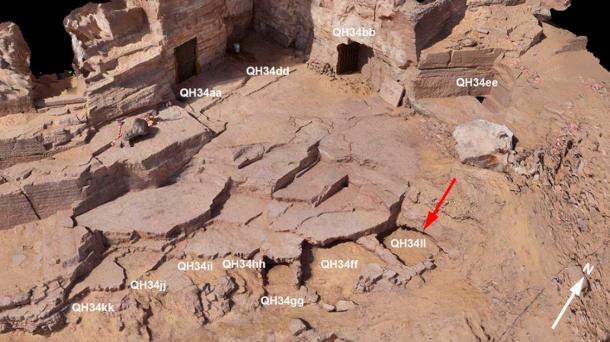
Overview of some of the Qubbat al-Hawā tombs, including the crocodile tomb on the right. (José Luis Pérez Garciá)
Sacrifices to Sobek, the Crocodile-Headed God
In ancient Egypt, crocodiles were used in rituals dedicated to Sobek, the god of water, fertility and pharaonic power and influence. In addition to his role in helping Egypt’s pharaohs achieve and preserve political and military strength, Sobek was also said to protect the people from the dangers associated with the Nile.
These would have included rapid and massive flooding, exposure to waterborne diseases, and attacks by ferocious creatures including venomous snakes, hippopotami, and crocodiles - the same crocodiles that were used in rituals meant to appease the mighty Sobek, who was usually portrayed with a man’s body but a crocodile’s head.
The skeletal remains found in the tomb belonged to two different species: the West African crocodile and the iconic Nile crocodile, both of which proliferated in the Nile region thousands of years ago.
The crocodile five bodies ranged in size from six to 11 feet (1.8 to 3.5 meters) long, which is average size for a West African adult but on the small side for the Nile version (the latter can grow to twice the length of a West African type). Three of the five skeletons were virtually complete, but the other two had a lot of missing parts.
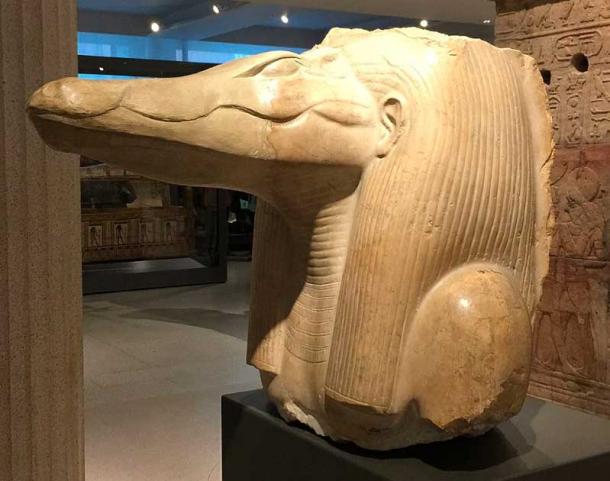
Statue of Sobek, the crocodile-headed god, from the mortuary temple of Amenemhat III, on display at the Ashmolean Museum in Oxford. (BVBurton / CC BY-SA 4.0)
Rare Discovery of Intact Mummified Crocodiles at Qubbat al-Hawā
“The crocodiles were first buried elsewhere, possibly in sand pits,” De Cupere said. “This allowed the crocodiles to dry out naturally. Then the remains were unearthed, wrapped and moved to the tomb in Qubbat al-Hawā. Body parts must have been lost during wrapping and transport.”
One of the intact mummified crocodiles was so perfectly preserved that the archaeologists found stones known as gastroliths still present it its intestines. These are small rocks that reptiles will sometimes swallow to help them digest food, or in the case of crocodiles to help them maintain their balance while immersed in water. The presence of gastroliths helped confirm that the crocodiles were not cut open and cleaned out after their deaths, but were mummified in a more natural state.
There were no signs of physical injury on the skeletal remains of the mummified crocodiles. Ancient Egyptians captured the dangerous creatures by ensnaring them with nets, and the researchers speculate the crocodiles buried in the tomb were either drowned, suffocated or baked in the hot sun to ensure they were dead before been sent off to the afterworld.
The unfortunate creatures were being offered to Sobek as sacrifices, with the proper rituals being carried out beforehand to make sure the sacrifices would be accepted and would bring favor to the Egyptian people.
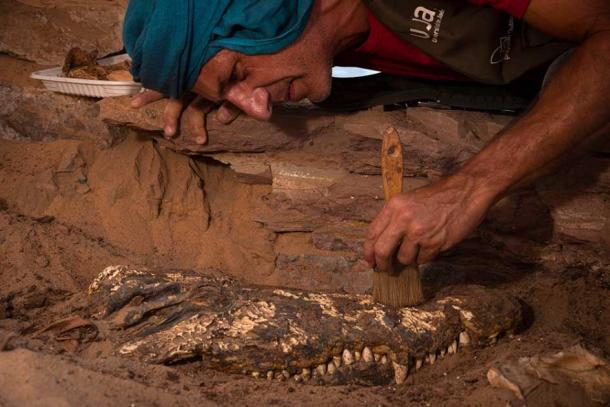
Archaeologist Vicente Barba Colmenero excavating the skull of one of the mummified crocodiles from the tomb at Qubbat al-Hawā. (Patricia Mora Riudavets / Royal Belgian Institute of Natural Sciences)
Sometimes, an Unwrapped Mummy is Better than a Wrapped One
The skeletal remains of the mummified crocodiles were no longer wrapped. But samples taken from the tomb contained microscopic traces of linen, palm leaves and rope, showing that the bodies and skulls had been mummified at the time of burial. The archaeologists determined they’d been entombed more than 2,300 years ago, based on stratigraphic evidence and on the advanced decay of the bandaging and the lack of pitch or bitumen covering the crocodile skeletons (later burials featured these added preservatives).
- Did Ancient Egyptians Actively Hunt Crocodiles for Mummification?
- Archeologists Discover Ancient Burial Site of Infants, Scorpions and Crocodiles
“Although several hundred crocodile mummies are available for study in museums worldwide, not many specimens have been subjected to detailed investigation,” the study authors noted in their PLOS One paper. “This is undoubtedly due to the fact that observations of these mummies are complicated by the bandages and because large amounts of resin or bitumen are often applied to the animal bodies.”
Because they could look at the skeletons of the animals directly, instead of being forced to rely on non-invasive imaging technologies (CT-scanning and radiographing) to peer through layers of bandages and resin, the archaeologists were able to examine the skeletons of the mummified crocodiles more thoroughly and completely than would normally be the case.
“I'm thrilled that finds like these give us another glimpse into the life of ancient Egyptians,” said De Cupere, in acknowledgement of the scientific and historical significance of this anomalous but highly revealing discovery.
Top image: Bea De Cupere from the Royal Belgian Institute of Natural Sciences with one of the mummified crocodiles. Source: Patricia Mora Riudavets / Royal Belgian Institute of Natural Sciences
By Nathan Falde


















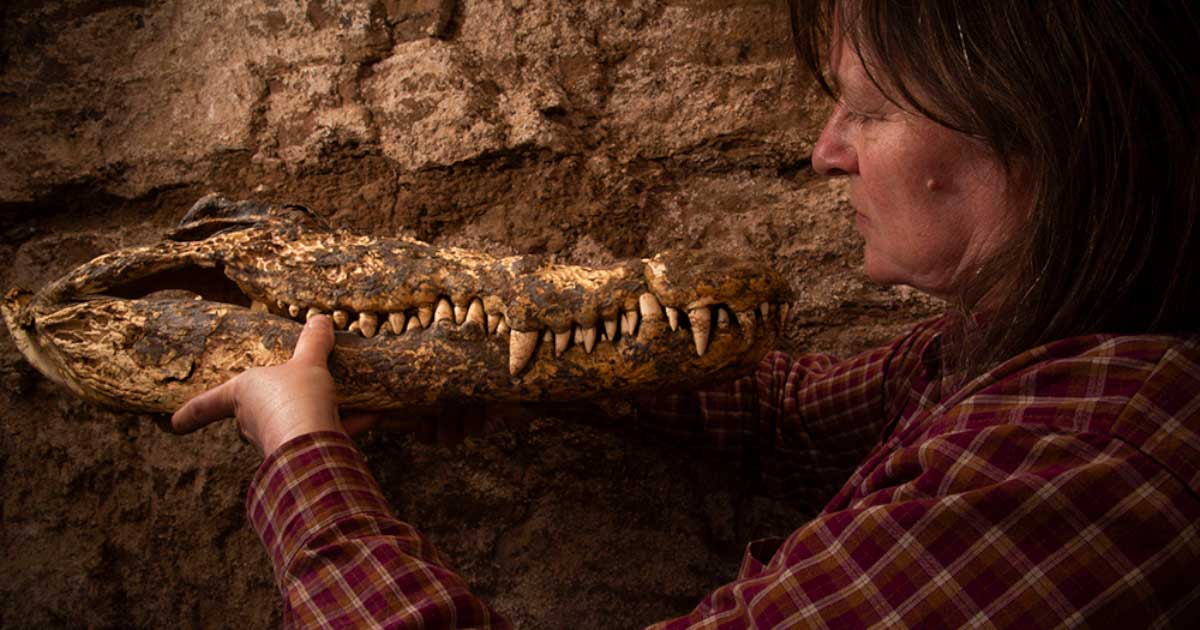

Comments
Oh come on, you dummies. The caverns were flooded, and the people were dead before the crocs smelled and found them, and got trapped.
Nobody gets paid to tell the truth.